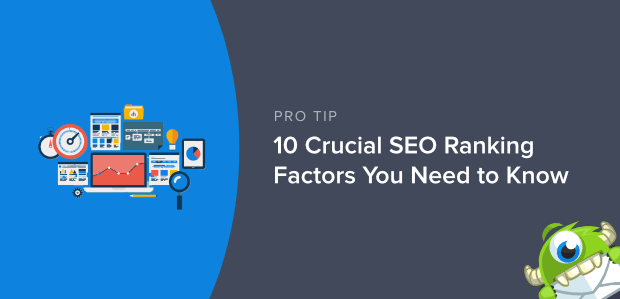3 More Search Engine Optimization For Your Website
You're surrounded by information and regular updates from Google regarding your SEO. These are the most effective ways to boost traffic in 2022.
1. Keyword research for target keywords is the foundation for content creation
SEO tools like Ahrefs, Surfer SEO and Semrush can assist you in identifying the most relevant keywords to target when you are developing your SEO strategy for your content. Keyword planning tools can aid you in aligning your content with what users are searching for. Each piece you create must match search intent as closely and accurately as possible.
Whatever device you are using, it is important to offer suggestions.
Keywords that are essential. These keywords should be the main theme.
Secondary keywords. Make use of secondary keywords as subheadings on your article and on your pillar pages as often as you can.
Supporting languages Lower-level keywords you can use throughout the text.
If you find important secondary keywords that are attracting sufficient search volume, conduct your research to determine if it is possible to create content and articles specifically for them. If you link your articles to content on a broad subject to articles on specific subtopics, you show search engines that you have a lot of knowledge regarding the keyword or subject. This will increase your chances for ranking high in search results. There is a chance that you'll overcomplicate your content by trying to fit more keywords in the same content. Google and readers may consider this to be unnatural. Also, you should consider the possibilities offered by long-tail keywords. These phrases with lower volumes tend to have a the intent of a transactional search. They could be utilized for content that draws your potential customers further down in the funnel. Check out how to get more website visitors for more.

2. Make sure you use catchy titles and headings. Although they may be used interchangeably titles as well as headings can be distinctly distinguished and place in different parts of the code used for your websites. The title is in the component in each HTML file you create. The metadata of a web page (data about data) is stored in this container. This includes information such as the title of the webpage, the language it is written in and the scripts that you use to access your analytics tools. The title text is what's in between the lines. Google and other search engines can use tags to tell them what page is about at their top level. The page will also appear on search engine results. A well-constructed title does two important things.
Include the keyword you would like to be ranked for.
Click on the link and read the article.
SEO best practice calls for good titles. They should be your first thought when writing content. Google will replace web pages that are ranked in search engines with articles that can be clicked if they don't get clicks. Headings can be found within the source code. They define the portion of your website that users actually will see. The wrapping of the title of your HTML document with headings ensures that it is easily visible to everyone who visits your site.
tag with your subheadings placed between
Additional subheadings are wrapped in tags that span from to.
Search engines like to rank high-quality content that covers the topic well because they are searching for an all-in-one resource of information. If Google ranks your site it does it with the confidence that "this is the site that can answer your questions." Check out how to increase website seo for more.

3. Write strong meta descriptions The meta description tag is the text block that appears next to the content title in the search engine result pages (SERPS). Meta description tags are identical to the page title. You should also examine the HTML code for each page. Like the of the header text, consider what you would like as the user. What kind of description could cause you to click on the link to learn more? Google frequently changes meta descriptions. After analyzing user intent they'll do their best to find your content, explain it in terms that they believe people are looking for and display it. Sometimes, they pull the text taken from the meta description and alter it to make it appear in a manner that they believe will work better. While the meta description doesn't form part of the algorithm that determines search rankings, it is used to determine your website's click through rate from the search results. Google may rewrite your meta description on your behalf. It's always worth trying to find the information you need available, and also an opportunity for free advertising in the search results. Also, check out how to improve ecommerce conversion rate for more.

4. Speed up pages The section of each HTML document loads before the visible portion of a specific page. This means that the code in this section needs to be as concise as possible. Unfortunately, because this section of a webpage is not accessible to the people who use the site, the head ends up being neglected over the years. It's normal to have multiple scripts such as Google Analytics, or user behaviour tools such as Hotjar in the code. This can result in the download time to be slow. Google's Lighthouse testing can be used to improve page speed. This tool will tell you everything that's slowing down your load time. This tool provides information at a fine level. It can tell you what is crucial to your internal requirements and what can be left out. Also, you should make sure your CSS (cascading style sheets) are clean. They must be current and constructed as efficiently possible. If you're given the opportunity to minify your CSS, make sure you do it. While you don't necessarily have to have a ton of code streamlined, every tenth and a half of a second count. Website managers with pages that are very detailed will be able to utilize Google to give the most information possible for their visitors and Google. It's best to make sure that your text is visible before your web font loads. Lazy loading could be used to render smaller content, like videos and images, following your text. |


 新浪微博
新浪微博 QQ空间
QQ空间 人人网
人人网 腾讯微博
腾讯微博 Facebook
Facebook Google+
Google+ Plurk
Plurk Twitter
Twitter Line
Line
